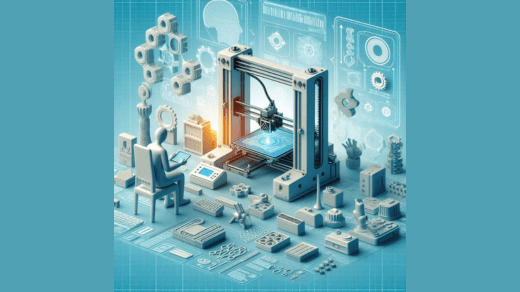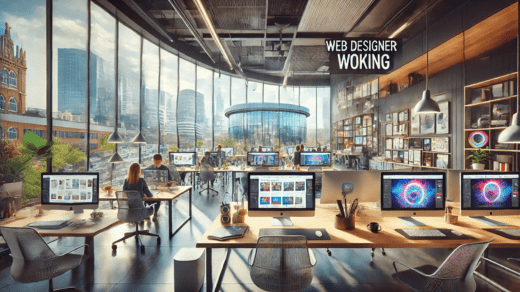
In today’s technologically advanced world, printers have become essential tools for both personal and professional use. From traditional 2D printers that produce documents and images to cutting-edge 3D printers that create three-dimensional objects, the range of printing technology is vast and versatile. This article will provide an overview of both 2D and 3D printers and delve into the features of the Flashforge Adventurer 5M 3D Printer, a standout in the 3D printing market.
Understanding 2D Printers
2D printers are designed to produce flat, two-dimensional outputs such as documents, photographs, and artwork. They are categorized into several types, each serving different needs:
Inkjet Printers: Inkjet printers are renowned for their ability to print high-quality images and vibrant colors. They work by spraying tiny droplets of ink onto paper, making them ideal for photo printing and detailed graphics. Inkjet printers are versatile and can handle various paper types and sizes, from glossy photo paper to standard office sheets.
Laser Printers: Laser printers utilize a laser beam to transfer toner onto paper, producing sharp and clear text and graphics. They are particularly effective for high-volume printing and are commonly used in office environments. Laser printers offer fast print speeds and cost-efficiency for large print runs, making them a popular choice for businesses.
All-in-One Printers: All-in-one printers combine multiple functions, including printing, scanning, copying, and sometimes faxing. These multifunction devices are ideal for home offices or small businesses where space is limited but versatility is needed. They provide convenience by consolidating several functions into a single machine.
Exploring 3D Printing Technology
3D printing, also known as additive manufacturing, is a transformative technology that builds three-dimensional objects layer by layer from digital models. Unlike 2D printing, which creates flat images, 3D printing produces tangible items with various applications. The primary 3D printing technologies include:
Fused Deposition Modeling (FDM): FDM is one of the most common 3D printing technologies. It works by melting plastic filaments and extruding them to create objects layer by layer. FDM printers are widely used for prototyping, educational models, and functional parts due to their affordability and ease of use.
Stereolithography (SLA): SLA printers use a laser to cure liquid resin into solid layers. This technology is known for producing high-resolution prints with smooth surfaces and fine details. SLA is often used for applications that require precision, such as jewelry design, dental models, and intricate prototypes.
Selective Laser Sintering (SLS): SLS employs a laser to fuse powdered materials into solid objects. It supports various materials, including plastics and metals, and is used for creating durable and functional parts. SLS is commonly utilized in industrial applications and advanced prototyping.
**Spotlight on the Flashforge Adventurer 5M 3D Printer
Among the many 3D printers available on the market, the Flashforge Adventurer 5M 3D Printer stands out due to its advanced features and user-friendly design. Here’s a detailed look at what makes this model a preferred choice for both hobbyists and professionals:
1. High-Quality Print Performance: The Flashforge Adventurer 5M 3D Printer is renowned for its exceptional print quality. It delivers precise and accurate results, thanks to its advanced extrusion technology and motion systems. Whether you’re working on intricate prototypes or detailed designs, this printer ensures smooth and reliable performance.
2. Spacious Build Volume: One of the key features of the Flashforge Adventurer 5M 3D Printer is its generous build volume. This allows users to print larger objects or multiple items at once, making it ideal for projects that require more space. The expanded build area is particularly beneficial for users involved in architectural modeling or large-scale prototyping.
3. Auto-Leveling System: The Flashforge Adventurer 5M 3D Printer comes equipped with an innovative auto-leveling system. This feature automatically calibrates the print bed, ensuring it is perfectly level and properly aligned. The auto-leveling system simplifies the setup process and enhances print quality by providing optimal adhesion and consistent results.
4. Intuitive Touchscreen Interface: With its modern touchscreen interface, the Flashforge Adventurer 5M 3D Printer offers a user-friendly experience. The intuitive design allows users to easily navigate settings, start prints, and monitor progress. The touchscreen interface enhances usability and streamlines the printing process, making it accessible for users of all skill levels.
5. Efficient Printing Speeds: The Flashforge Adventurer 5M 3D Printer is designed for efficiency, offering fast printing speeds without compromising quality. Its optimized motion system and firmware contribute to quicker production times, making it a valuable tool for users who need rapid turnaround on their projects.
6. Durable Construction: Built with high-quality materials and robust engineering, the Flashforge Adventurer 5M 3D Printer ensures long-term durability and reliability. Its sturdy construction supports consistent performance and reduces the need for frequent maintenance, making it a dependable choice for continuous use.
7. Versatile Connectivity Options: The Flashforge Adventurer 5M 3D Printer offers various connectivity options, including USB and Wi-Fi. This flexibility allows users to easily transfer files and manage print jobs remotely. The multiple connectivity options enhance convenience and adaptability for different printing needs.
Choosing the Right Printer for Your Needs
Selecting the right printer depends on your specific requirements and applications. For traditional 2D printing tasks, an inkjet or laser printer may suffice. However, if you’re exploring 3D printing, the Flashforge Adventurer 5M 3D Printer offers advanced features and high performance that cater to a wide range of needs.
Factors to Consider for 3D Printing:
- Application: Determine whether you need a printer for prototyping, manufacturing, or creative projects.
- Build Volume: Choose a printer with a build volume that suits the size of your projects.
- Material Compatibility: Ensure the printer supports the materials you plan to use.
- Budget: Consider the initial cost of the printer and ongoing expenses for maintenance and materials.
Conclusion
Both 2D and 3D printers play crucial roles in modern printing technology. While 2D printers remain essential for everyday tasks, 3D printers like the Flashforge Adventurer 5M 3D Printer offer innovative solutions for creating detailed and functional objects. By understanding the features and benefits of these printers, you can make informed decisions and select the best model for your needs.
Explore the potential of advanced printing technology and see how the Flashforge Adventurer 5M 3D Printer can enhance your 3D printing projects with its exceptional features and reliable performance.








